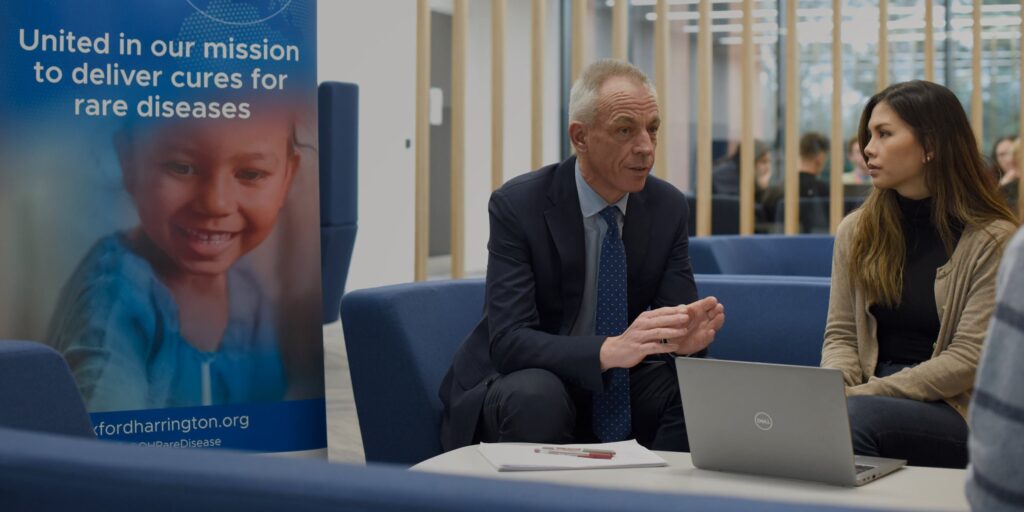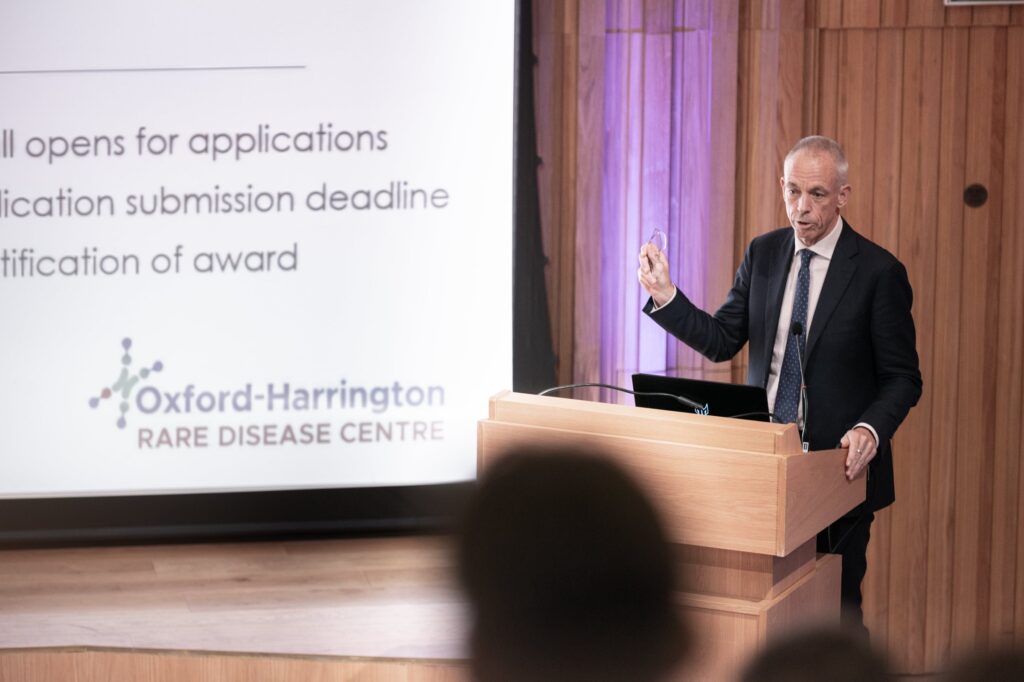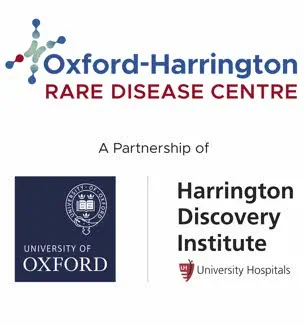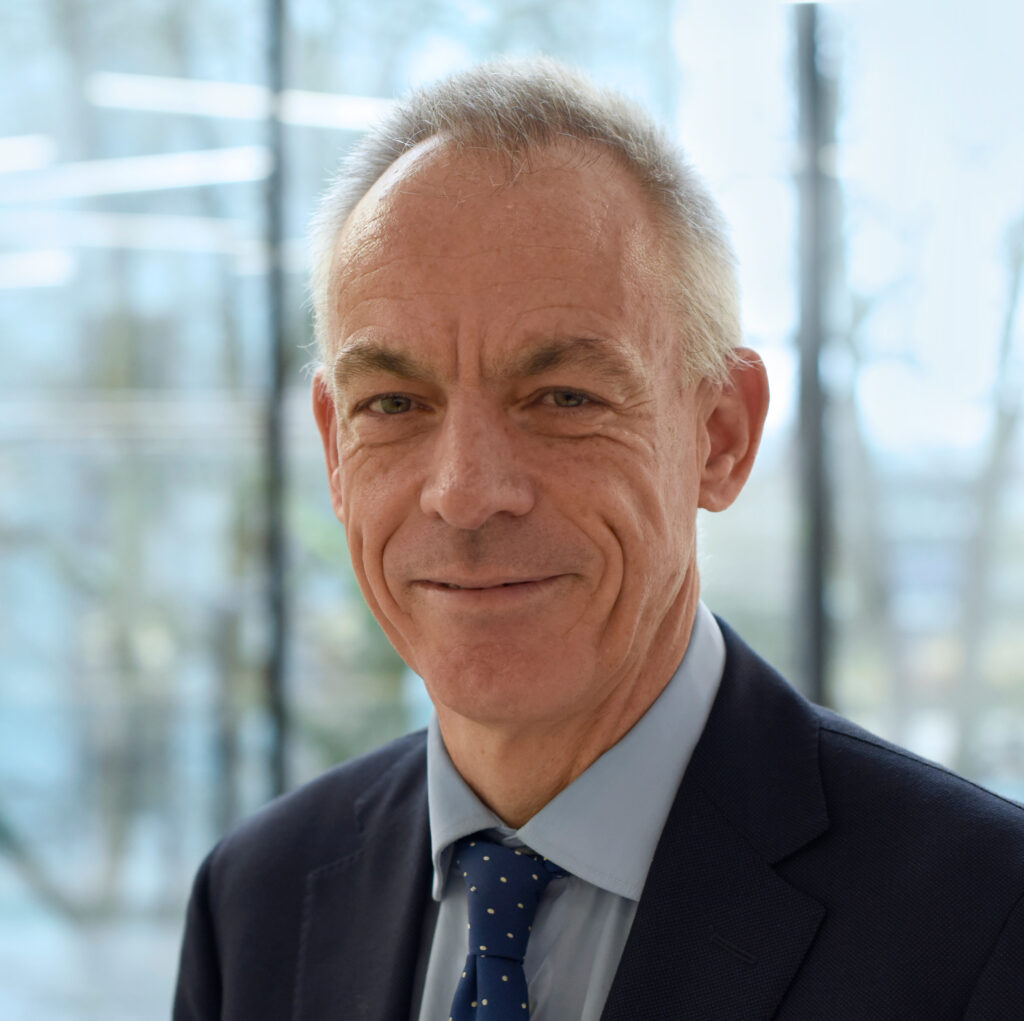The transatlantic partnership advancing breakthrough science into innovative treatments for rare diseases
SPONSORED CONTENT
Interview with Matthew Wood, MD, PhD, director and chief scientific officer of the Oxford-Harrington Rare Disease Centre. Here Matthew shares the vision for the Oxford-Harrington Rare Disease Centre and how it plans to drive change
1. Can you tell us about the vision and mission of the Oxford-Harrington Rare Disease Centre and its main objectives in advancing research and treatments for rare diseases?
Our guiding vision at the Oxford-Harrington Rare Disease Centre (the OHC) is simple: deliver new treatments for the nearly half a billion people affected by rare diseases worldwide, with an initial goal of advancing 40 new medicines into clinical development by 2033.
We aim to achieve this objective through a unique transatlantic partnership between the University of Oxford, which brings exceptional rare disease research expertise, and Harrington Discovery Institute at University Hospitals in Cleveland, Ohio, USA, which has a proven track record of advancing breakthrough research into new medicines for patients—it has funded over 200 projects, launched 42 companies and advanced 21 medicines into clinical development.
2. What makes the OHC’s approach to rare disease research unique compared to other institutions or initiatives in this field?
We believe that the OHC is a first-of-its-kind global initiative dedicated to finding cures for rare diseases.
We recognise that we can only achieve this bold vision through a collaborative approach that brings together the best medical research and drug development expertise, with passionate and highly motivated people and strong links into a supportive drug research and development ecosystem via our Advisory Council, which is led by former UK Prime Minister David Cameron.
The funding model we are implementing is also unique and disruptive with philanthropic and non-profit investment providing a foundation to advance and de-risk academic projects to a point where additional return-focused investment can take these medicines through to patients.
3. The OHC focuses on translating scientific breakthroughs into clinical applications. Could you share an example of a project that has successfully bridged this gap?
We announced the first cohort of ten research projects to be funded under our Rare Disease Scholar programme in October 2024. These are projects sourced from academic laboratories in the US, Canada and the UK that represent breakthrough discoveries across rare neurologic, oncologic, and metabolic and developmental diseases with clear potential for clinical impact. These projects are investigating novel approaches, such as gene or cell therapies, to address genetic diseases like spinal and bulbar muscular atrophy, PEX1 Zellweger Syndrome and rare paediatric cancers.
The OHC also launched a Therapeutics Accelerator in 2023 to ‘accelerate’ projects being developed by translational scientists and innovative biotech companies, providing funding alongside other investors as well as dedicated project management and development support.
Our first Accelerator company is AlveoGene, which is developing inhaled gene therapies for rare respiratory diseases. One of its lead programmes, AVG-002, is targeting lethal neonatal Surfactant Protein B (SP-B) deficiency, an ultra-rare genetic disorder that affects one in a million newborns causing respiratory failure and death after just a few months. Patients currently have very few, if any, treatment options.
AlveoGene has demonstrated promising results in mouse models that suggest a single dose of AVG-002 could essentially repair this genetic defect, restore lung function and potentially provide a cure. The company is preparing to take AVG-002 into clinical trials, and if successful, could file for regulatory approval in 2028.

4. How do you ensure that the research being conducted at the OHC is patient-centred and addresses the needs of those living with rare diseases?
Each rare disease affects fewer than 1 in 2,000 individuals, and in many cases affects only a very few patients. Researchers working in these disease areas are often closely connected to patients and their families as well as to patient groups and foundations representing the affected community, often globally. They are very passionate about advancing their research to provide treatments where often none exists, and unmet need is extremely high.
At the OHC, we are acutely aware of the close relationship between researchers and patients with these diseases and the need to ensure that the patient voice is heard. This is integral to our work. An example here is our work with Genetic Alliance UK—an organisation bringing together >200 rare disease patient groups.
In addition, several members of our team have direct experience of the harrowing journey of living with a rare disease or having an affected family member.
These perspectives are crucial to ensuring our focus is on translating breakthrough science into medicines for the benefit of rare disease patients and their families.
5. Collaboration is key in rare disease research. Can you discuss some of the partnerships or collaborations that have been particularly impactful in advancing your work?
Collaboration is essential, not just between research groups and patients, but also with bodies that can facilitate the overall process of making new treatments available to patients.
A great example of the former is the Friedreich’s Ataxia Alliance at Oxford (FA Alliance), which was established by the OHC via a philanthropic donation and brings together researchers and clinicians from across the University of Oxford and beyond to develop new therapies to cure or treat FA, a degenerative neurological disease.
In terms of the latter, the OHC has built relationships with the biopharma and investment communities, such as Takeda, the global pharma company, and Morgan Stanley GIFT Cures SM, a dedicated rare disease fund in the US, among others.
In the UK, the OHC has deep connections with national bodies such as Genomics England, the Rare Therapies Launch Pad, Medical Research Council, British Heart Foundation, NHS and Medicines and Healthcare products Regulatory Agency—collaboration between these bodies make the UK one of the best places in the world to develop rare disease treatments.
6. What role do you see for gene therapy and genetic-based treatments in the future of rare disease care, and how is the OHC contributing to these advancements? How does the OHC approach the integration of new technologies, such as CRISPR or artificial intelligence into research?
Given that the majority of rare diseases are genetic in origin, the development of genetic therapies is essential to rare disease therapeutics. Genetic medicines are already demonstrating their value for treating genetic diseases, but we don’t exclude other more traditional modalities, such as small molecules. We want to accelerate the process of getting new medicines to patients, and with genetic medicines, we want to use technological advances so that this can be done in parallel for multiple diseases, providing scalable genetic solutions.
By this I mean, if the therapeutic delivery vector, or the chemistry of an oligonucleotide drug for example, is constant and proven to be safe, then it may be possible to switch in the corrective genetic component without having to go back to the start of the process in each case, saving time and cost.
This approach, which we have called “therapeutic genomics,” was given a boost with the recent highly prestigious award of a new MRC Centre of Research Excellence to Oxford, with the OHC as partner.
7. Given the complexity of rare diseases, how does the OHC facilitate the transition from basic research to clinical trials and, eventually, to treatments accessible to patients?
Our campus in Oxford and the Harrington Discovery Institute in the US has been deliberately set up so that Scholars are close to extensive academic and clinical resources combined with support in drug development, business development and commercial strategy to facilitate this transitional aspect of new therapy development.
Furthermore, our Therapeutics Accelerator aims to bridge the gap with company creation and investment from venture capital and other sources designed to advance research from pre-clinical development to patients, with AlveoGene as our first exemplar company.

8. Rare disease research often involves a significant amount of advocacy and awareness. How does the OHC engage with the rare disease community, including patients and their families?
We actively engage with the rare disease community via multiple channels, through our Advisory Council, or research scholars as well as through patient foundations and charities, so that our activities and where we can help are clearly understood.
A great example was the successful three-day symposium we hosted in Oxford in September 2024, which brought together over 180 leaders from academia, biotech, pharma, venture capital, philanthropy and patient groups from around the world to explore how cutting-edge research, innovative treatment strategies, and collaboration is driving the development of effective therapies for rare diseases.

9. Looking forward, what are the next major goals for the OHC in terms of research, clinical trials, and expanding access to innovative treatments for rare diseases?
We have made a great start towards our vision of delivering 40 new medicines for rare diseases, but there is still a huge amount of work to be done to bring these urgently needed therapies to patients.
We are currently seeking proposals for the next ten OHC Scholars, to be announced later in 2025, which will continue to drive the pipeline of research programmes being advanced under the OHC.
We are also looking at bringing several new companies into the Therapeutics Accelerator and building mechanisms for providing further funding for those companies.
We will expand our Advisory Council to further extend our networks into philanthropic, investment and business communities to drive our mission in 2025. It is a hugely exciting time for Oxford-Harrington, during which we remain fully committed to meeting the unmet needs of rare disease patients globally.


Matthew Wood is director and chief Scientific officer of the Oxford-Harrington Rare Disease Centre, professor of neuroscience at the University of Oxford, adjunct professor of medicine, Case Western Reserve University School of Medicine, and research vice president, Muscular Dystrophy UK. He is also an advisor to several UK research and funding bodies, including Genomics England, and is a co-founder of four spin-out companies.

